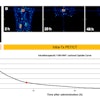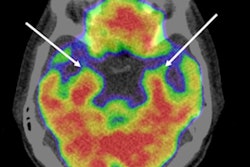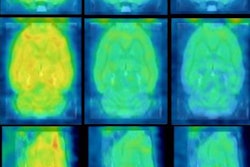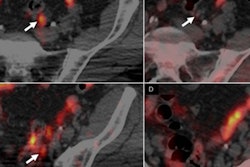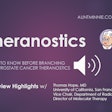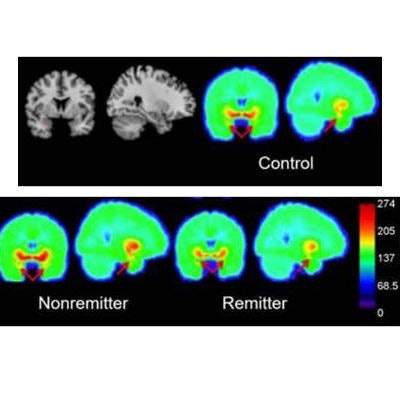
A new PET tracer designed to target a certain protein in the amygdala is showing promise for determining the efficacy of treatment for major depressive disorder (MDD), according to a study published in the April issue of the Journal of Nuclear Medicine.
The radiotracer carbon-11 (C-11) DASB targets the serotonin transporter protein (5-HTT) in the amygdala, an area of the brain involved in emotional processing. One possible treatment for MDD is the selective serotonin reuptake inhibitor (SSRI) escitalopram; however, not all patients respond.
By measuring the level of 5-HTT before treatment, PET scans with C-11 DASB could help identify who will benefit from the SSRI (JNM, April 2018, Vol.59:4, pp. 665-670).
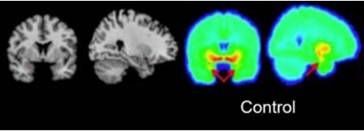
 Averaged voxel images of control, remitter, and nonremitter 5-HTT binding at the plane of the amygdala. Images courtesy of Ananth et al and SNMMI.
Averaged voxel images of control, remitter, and nonremitter 5-HTT binding at the plane of the amygdala. Images courtesy of Ananth et al and SNMMI."Optimizing treatment is challenging and is performed by trial and error, which could result in weeks of ineffective treatment, placing a burden on patients," said lead author Mala Ananth from Stony Brook University in a release from the Society of Nuclear Medicine and Molecular Imaging (SNMMI). "As such, a pretreatment indicator that helps clinicians determine whether treatment will be successful is desperately needed."
The study included 31 healthy controls and 26 medication-free patients with MDD who received a PET scan using C-11 DASB. The MDD subjects then received eight weeks of standardized therapy with escitalopram.
Ananth and colleagues found a significant difference in amygdala binding, with medication-free patients showing 11% less amygdala binding than the controls. They suggested that 5-HTT amygdala binding should be studied further as a possible biomarker for remission after treatment with escitalopram.
"Our results indicate that patients who found relief following escitalopram treatment had less 5-HTT protein before treatment began," Ananth said. "This is exciting because it suggests that pretreatment neurobiology can be used to predict response to treatment, potentially preventing ineffective treatment trials."



